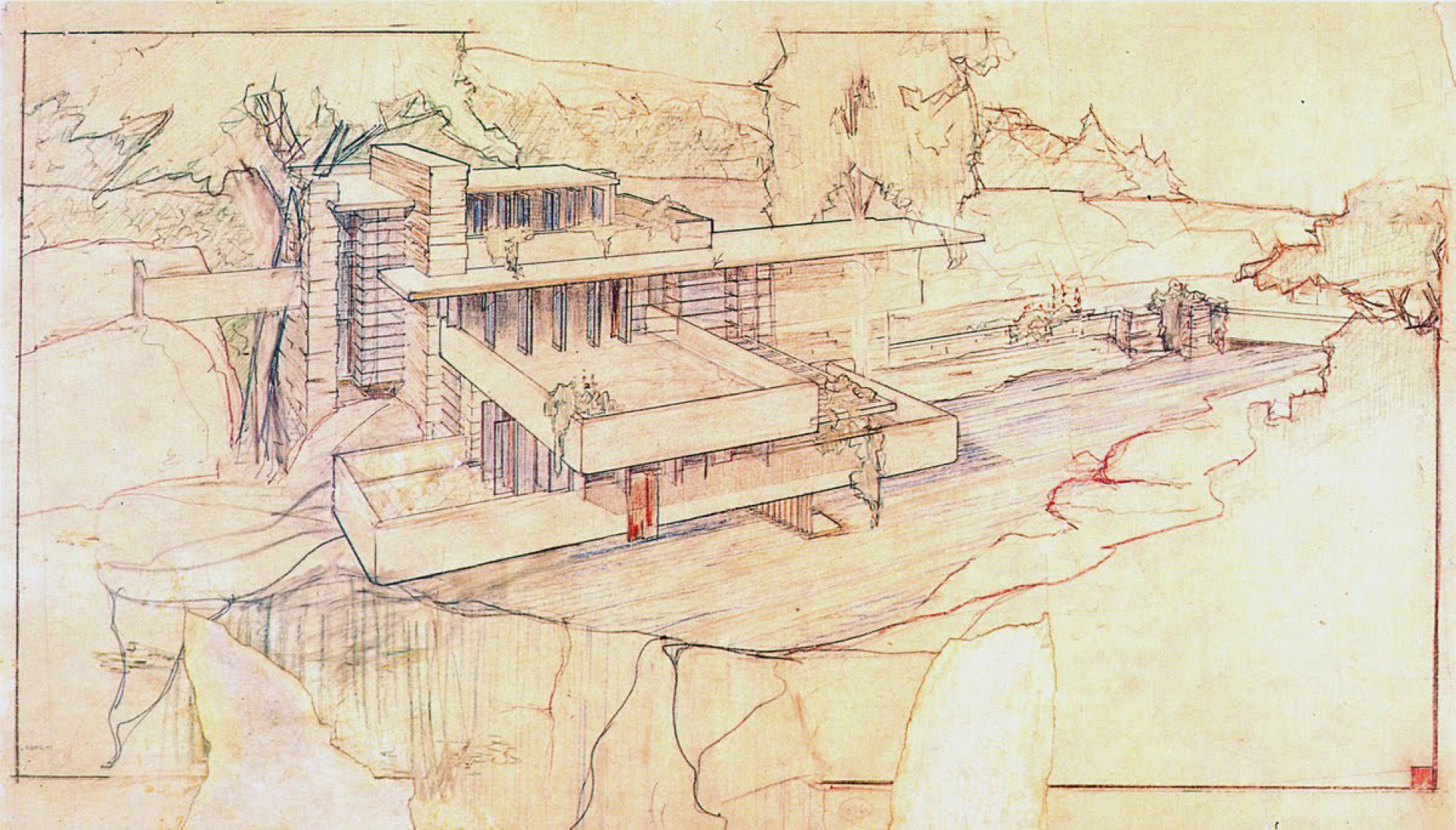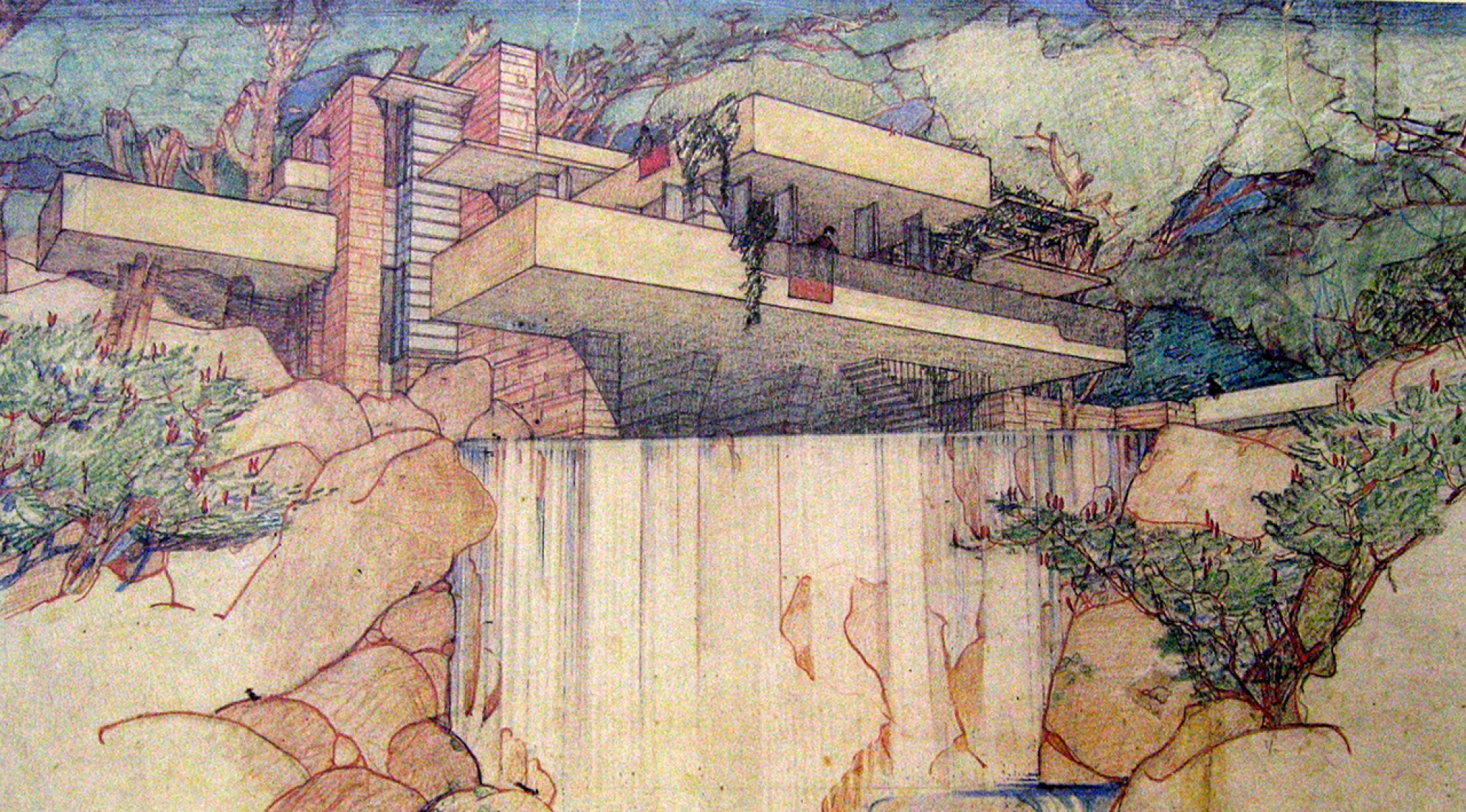Marking the 150th anniversary of the American architect’s birth on June 8, 1867, the exhibition will comprise approximately 450 works made from the 1890s through the 1950s, including architectural drawings, models, building fragments, films, television broadcasts, print media, furniture, tableware, textiles, paintings, photographs, and scrapbooks, along with a number of works that have rarely or never been publicly exhibited.
Structured as an anthology rather than a comprehensive, monographic presentation of Wright’s work, the exhibition is divided into 12 sections, each of which investigates a key object or cluster of objects from the Frank Lloyd Wright Archive, interpreting and contextualizing it, as well as juxtaposing it with other works from the Archive, from MoMA, or from outside collections.
Frank Lloyd Wright at 150 is organized around a central chronological spine highlighting the major events in Wright’s life and career, which will be illustrated with some of his finest drawings and include key works such as Unity Temple (1905–08), the Robie House (1908–10), Fallingwater (1934–37), the Johnson Wax Administration Building (1936–39), and Beth Sholom Synagogue (1953–59).
Wright’s ongoing preoccupation with ornament is the subject of another section, together with sections that investigate Wright’s understanding of the relationships between nature, landscape, and architecture at the scale of the individual organism, the garden, and the community, and his fascination with circular geometries that likewise range in scale from ornamental forms, to the building, to site planning.
As a master of self construction, a section centered on Wright’s attempt to democratize his vision through DIY building systems dialogues with another that argues Frank Lloyd Wright was one the first celebrity architects, a savvy manipulator of mass media such as television, radio, and magazines, who used these outlets to advance his ambitions. His celebrity status is illustrated through print media, including the Time magazine election of Wright as Man of the Year, and television broadcasts of his famous interview with Mike Wallace and an episode of What’s My Line? in which Wright is described as “world famous architect.”
The last thematic section considers the archive itself as an object of study and will include the painstakingly conserved model of St. Mark’s, a radical but ultimately unbuilt design for a skyscraper residence for New York, the model of the Solomon R. Guggenheim Museum, an analysis of Wright’s drawings as they evolved over time, and a data-visualization project illustrating Wright’s global network of clients, professional relationships, and buildings.
Frank Lloyd Wright at 150: Unpacking the Archive is organized by MoMA in collaboration with the Avery Architectural & Fine Arts Library, Columbia University, New York, and organized by Barry Bergdoll, Curator, Department of Architecture and Design, MoMA.





























